| Do you need a Mold Inspection? Sometimes mold has shown up and you just need answers. You need to find the cause, whether it be from just adverse weather or if recent home improvement work may be at fault. We specialize in mold cause analysis and remdiation. Separate and apart from our “Free Estimate” service, when you need an expert inspection for construction related mold remediation problems we will be here for you. We offer you a written report, photo markups and analysis so that you can make a decision for a plan of action. |
|
Are you selling your home? Often homeowners find that they have mold in their homes at the time of sale because an inspector has detected it when doing an inspection. We deal with this problem all the time and can remediate the problem so that you can go on and sell your home knowing that you acted responsibly in getting rid of the problem for the new owners.
|
| Typical Mold Inspectors and Remediators cannot adequately address the cause of the underlying moisture problem. Mold Removal is a narrow "single trade" business. Often failures in the remediation lead to a return of the problem because of the "single trade" mindset. Call a professional Mold Inspector that knows all aspects of moisture mitigation. |
|
Wikipedia Mold Remediation(Robert Wewer, Owner is a contributor to this wiki page) Unlike most Mold Remediation Companies that only focus on testing and killing mold, we have expert craftsmen from all trades on staff that rectify the causes of mold proliferation. We do not have to subcontract to other companies for any of the repair work.
Dealing with several "experts" can be disastrous. Generally, the "One-Trick Pony" companies only possess expertise in one discipline or trade. It is usually the point where one trade leaves off and another picks up
that serious problems arise.
Mold Remediation in Philadelphia is different than in other areas of the United States. The unique diversity of climatic temperatures, the Gulf Stream flow of moisture and the heating and air conditioning cycles are unique to the area. Mold growth inside of the residential domain requires certain elements to succeed. The type of mold that is most troubling is Black Mold, which represents several types found growing on construction materials. Testing for mold is expensive and it usually only verifies what is already very apparent to the witness.
Mold Remediation inside stucco walls
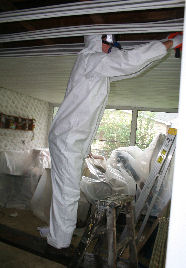 Expert Mold Removal Expert Mold Removal |
Left: Low Sloped Roof was improperly roofed in Asphalt Shingles and it caused a reconstruction of a bathroom and porch enclosure. Can your typical mold remediation company handle roofing issues? Obviously even typical roofers fail...... |
Opinions will vary but if you call a professional home inspector for mold, you will probably get referred to a mold remediation inspection-testing firm. Most home inspectors do not want to even mention the word "mold" because they do not want to unnecessarily alarm a client but since they want to cover their bases, you will get the referral to the testing company. The mold remediation or testing company will be glad to test the outside vs. inside air for elevated levels of spores in your domain. They will also do swab and tape testing at the areas of visible infestation. A testing firm should test your HVAC system to make sure that your system is not compromised. This test is often overlooked, however. What you walk away with is an overview of the types of mold that you have present in your home. The removal process is the same whatever type of mold is present. That is why we say that mold testing is often a waste of time.
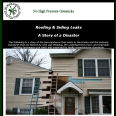
Bad Workmanship Causes Serious Black Mold Issues |
Left: This is another example of bad workmanship causing leaks, moisture problems and serious mold issues. Major problems were caused by simple details that were missed by roofers and siders. Mold remediation should include cause rectification. |
Diversity in opinions on the seriousness of mold run from outright self-serving fear mongering to that of those minimizing the effects of mold. Even the government puts forth ambiguous information as to the seriousness of mold in your home. We suggest that you fall on the side of caution when dealing with a mold remediation problem. Nobody wants mold in their house. There is a lot of information on the internet regarding real life stories where mold has harmed and even killed humans. We want you to be informed.
.jpg) |
Mold shows up in the HVAC forced air system that heats and cools the home. Mold grows most frequently on the condenser coils and is fed by the moisture and dust. Remediation should target these areas and resolve the issue permanently. |
It is also very important (if you suspect mold) that you find a remediation company versed not only in mold removal, but in construction theory and moisture mitigation (both vapor and liquid). Most remediation companies do not have adequate knowledge about the construction aspect of the issue and they will subcontract out any construction work, leaving their clients vulnerable to the deficits of the subcontracted workers.
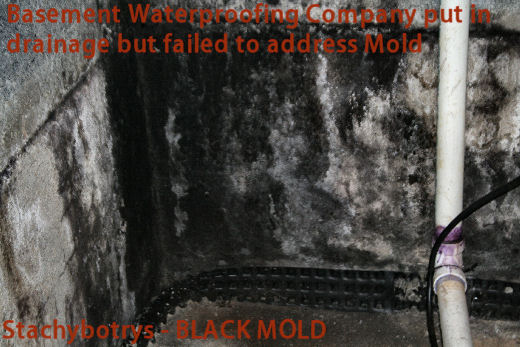 |
| Above: When mold is overlooked by waterproofiers, mold continues to grow on the walls of the basement. More on this below... |
When mold shows up in one area, it is common that it has been caused by moisture from an entirely different area. There are too many examples to list here but following are a few:
Basement mold is the result of moisture and it can come from poorly working gutters or badly graded landscaping. Remediation should address the cause.
Basement moisture can result in frost in the attic during winter and and subsequent attic mold. Remediation should address this problem.
Attic mold can be spread to the living area and HVAC system by negative air pressure from bathroom exhaust fans. Remediation should address this defect.
Siding can be leaking and cause mold to grow within the walls themselves. Remediation will include opening up the walls.
Interior walls may not hold back moisture vapor allowing it to enter the structure where it condenses and feeds mold inside walls, ceilings, insulation, etc. Air Sealing should be incorporated into the remediation process.
Added insulation can cause existing attic bypasses to emit increased moisture vapor because of pressure difference caused by cooler attic and moisture condenses on roof deck in attic causing mold to flourish. Remediation is made more difficult in this situation.
These are just a few common issues that may tend to baffle the average mold inspector. Limiting the response to the presence of mold by addressing just the localized and evident mold problem may cause a later resurgence of mold. We know. We get the calls when the mold returns after mold has been removed by other companies.
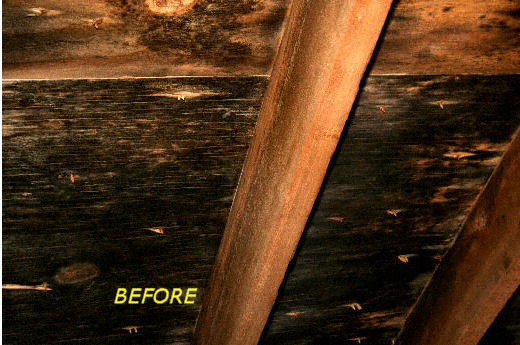 |
| Above: Attic mold is commonly caused by moisture vapor migration from the conditioned space. See our youtube video on the Causes of Attic Mold. More on this below.... |


Mold can only grow if it has enough moisture to sustain the organism. There are four sources of moisture: Ground water, Interior Vapor, Plumbing and Cladding (Roofing, Siding, etc.) Leaks. Many site an indoor relative humidity of 55% as being the danger zone for mold potential indoors. In the Philadelphia area, it is more realistic to try to maintain 45% or lower indoor relative humidity to stay out of the danger zone.

Mold Inside Walls -(For Interactive Image Click the link) |
| Above: One of the most puzzling situations is when Mold appears inside of walls and it is not the result of a direct leak. The industry's best "experts" fail to understand the dynamic of interior moisture vapor condensing at dew points within the walls! |
Much discussion and debate is ongoing regarding the installation of vapor barriers in residential construction in the Philadelphia area. The Air-Sealing industry in Philadelphia is also a variant of the insulation industry. Both areas of expertise are mandatory for a quality approach to mold prohibitive action in residences in the Philadelphia area. Air sealing is very important, especially on the lower rim joists and entry points of cold air into the building envelope as heated walls will facilitate a chimney-effect pushing air and interior moisture upward and into the attic where it can condense with the temperature differences within the attic areas. The secondary concern for Air-Sealing is for the attic bypasses, which are the gaps and holes that allow interior conditioned air into the attic spaces. ->Read on -or- Continue Attic Mold Below->
| |
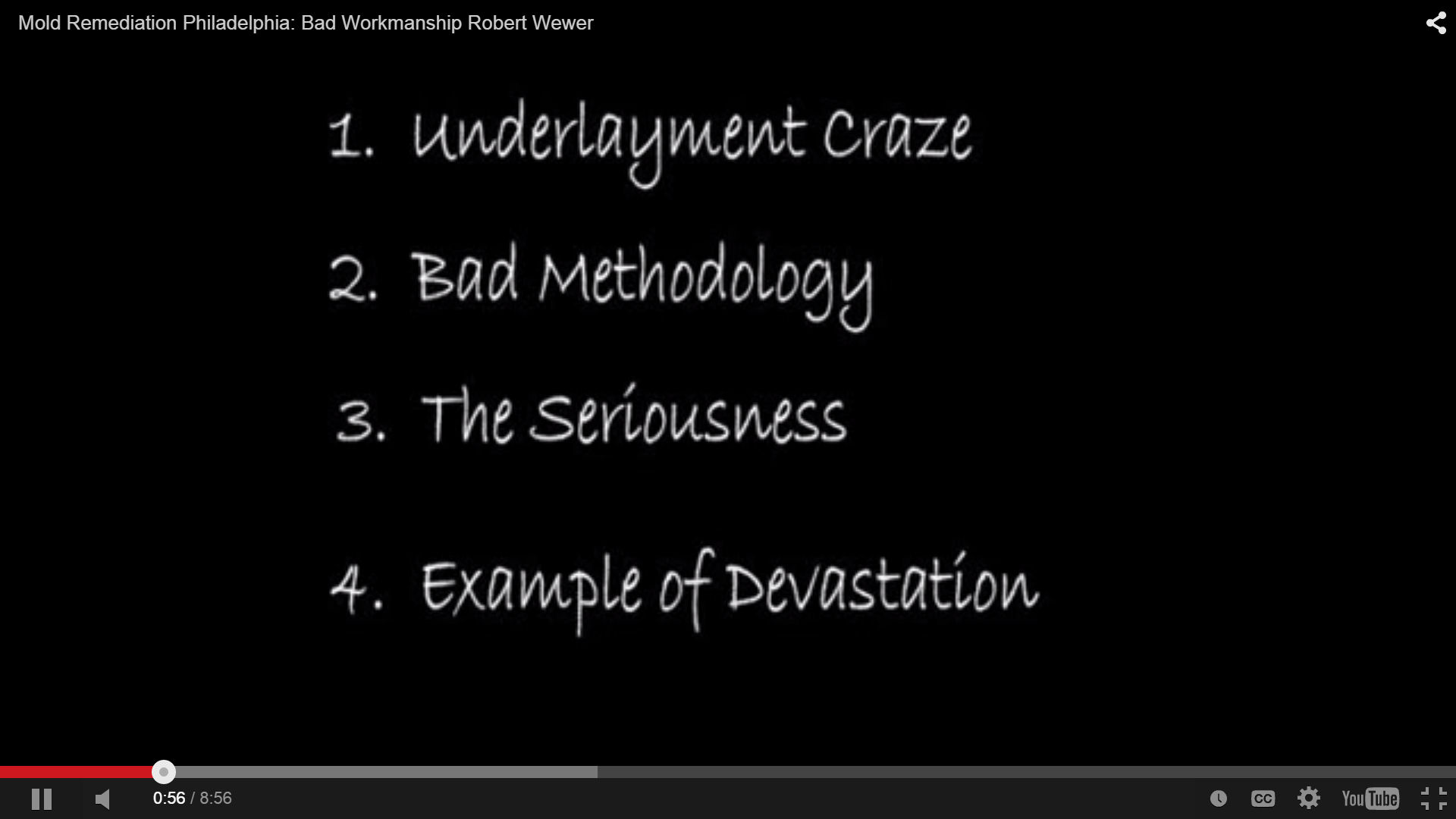 |
|
Above: Video describing how bad building practice causes mold. The exterior cladding trades have lost their souls to the "Underlayment Craze" and the damage is showing itself now. Industry leaders, manufacturers, specifiers and applicators need to take a long look at what they are doing and go back to school and learn the trades from Old World Craftsmen. |


A Philadelphia full-service contractor that is versed in all of the above, along with all construction elements of the residential arena should be sought out to provide lasting and guaranteed results for mold remediation in the Philadelphia area.



MOLD IN HEATING & AIR CONDITIONER SYSTEMS
Did you know that mold growth in any part of your home can foster or spread a Mold infestation to your HVAC or Air Handler of your heating system? Most of the time, and we do mean about 95% of the cases in which mold has taken hold within the envelope of a residential dwelling, mold spores are present in the HVAC system (if one is present). This does not pertain to homes with hot water baseboard heating systems.
.jpg) |
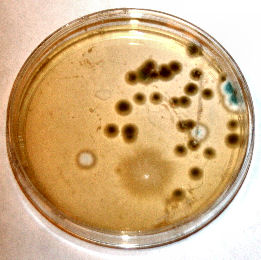 |
| The images above are pictures of Petri Dish Mold Cultures of register samples of the ducting of two different homes that had been infested in other areas of the home. If you have mold in one area of the home, chances are you have it in the heating and air conditioning systems. Dust mites thrive in moist environments (on actual moisture vapor) and the tiny fecal matter of the mites, along with animal dander, dust and debris trapped in the ducts, actually can feed mold. The Evaporator Coils and Condensation Pans of air conditioners can become intense breeding grounds for mold. We test HVAC systems. We also treat HVAC systems in homes and mold in Automobiles. Cars? Yes, if you have mold in your home, it is more than likely, in your car or truck. |
When mold is present and in its dry state, it's spores spread when as little as a small disturbance in the air. This can be the case where a person or a pet passes by, or in the normal ventilation air movement of the HVAC system moves the air over the dry spores. The spores then become taken in by the HVAC system. Once in the dusty environment of the duct-work, all that is needed is a little moisture to make the mold take up residence within the Air Conditioner coils of the system. The Air Conditioner, is present within the HVAC system, can foster mold growth as the condensation on the coils of the system and the condensation pan provide real moisture for the mold to thrive.
MOISTURE VAPOR
Even a home with high interior moisture content can actually cause moisture condensation on the cooler areas of the ducting and other elements of the HVAC system. High interior moisture (vapor) can be caused by a high water table (ground water), too high of a setting on the heater humidifier, roof and plumbing leaks, poor ventilation when cooking or showering, or a wet basement. Have us check your indoor humidity levels.
There are now claims being made regarding mold not requiring liquid moisture in order to thrive. The claims are announcing that a relative indoor humidity of 65% or more can foster mold growth. The claims also state that liquid moisture is not necessary for mold growth. The claims speak to condensation resulting from these obscene indoor relative humidity readings of 65% or more. Mold requires liquid moisture but moisture vapor from everyday activities easily condenses to provide the moisture in its liquid state to feed mold growth.
Condensation equals liquid moisture! It does not take 65% humidity to produce condensation! Condensation can occur at lower levels of relative humidity given temperature changes within a building envelope, dew points, etc. It takes liquid moisture to feed mold but it does not have to enter your home or building as liquid moisture.
BASEMENT MOLD
Philadelphia basements and crawlspaces need to be dry to stay free of mold. Liquid moisture in basements and crawlspaces is easily seen, but moisture vapor traveling through concrete floors and walls is not. Basements need to be measured for relative humidity and should not exceed 30% in the winter months (for cold basements) to prevent mold. This measure seems low to some, but better safe than sorry. A test on the floors for the presence of a basement sub-slab vapor barrier is mandatory. Standard basement waterproofing is not enough to stop many moisture problems and mold growth in many basements and crawlspaces.
| |
 |
Once the cause of the mold infestation is diagnosed and cured, follow up is necessary to eradicate the mold to ensure that it has not spread to the Heating and Air Conditioner systems. Often the cause of a mold problem is misdiagnosed and treated but the mold returns. This is often the case with Basement Waterproofing companies. |
A wet basement is treated as a cause of mold, when it is in reality a symptom. Several problems can cause a wet basement and usually this problem is a symptom of another cause. Ground moisture vapor 'wicking' upward can be tested with the "doormat test"(described on this page).
If at all feasible, ground water should be addressed from the outside of the building. Many times, Basement Waterproofing Systems are sold in err, as they are not the best systems for every basement water problem. Also - Beware of the use of Basement Wall Vapor Barriers used as water diversion systems because they can cause major mold problems.
ATTIC MOLD
| |
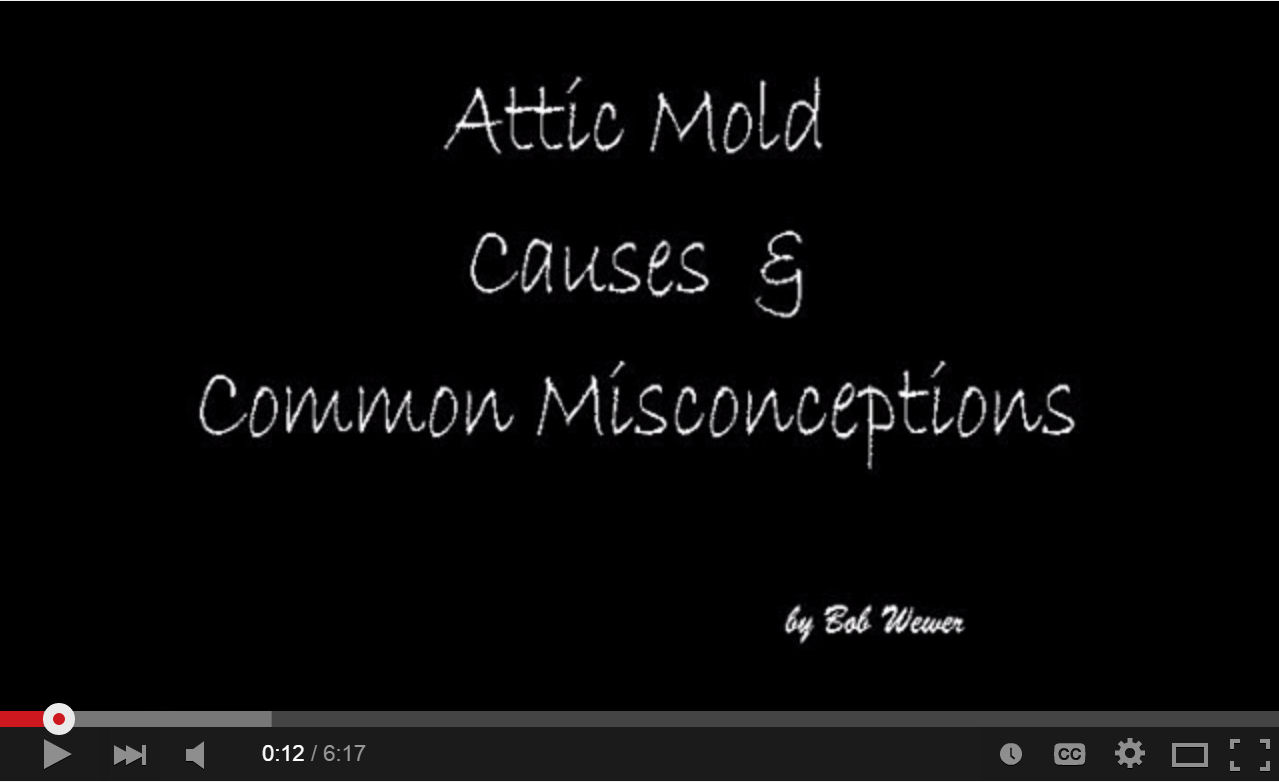 |
Mold in the Attic has to be dealt with in the right way. The industry would say that you have poor ventilation or you need more insulation. You may need these things but you have to find the cause of the problem first before you create a bigger problem. Watch the video to find out how these problems occur. |
|

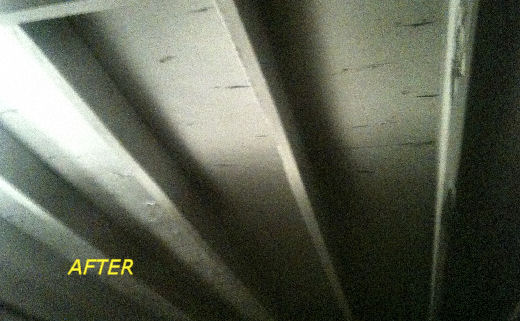
|
Photo: Extensive black mold in an attic caused by ceiling bypasses of warm moisture-laden air from the conditioned spaces below.
The lower photo was taken after the cleanup. This operation included checking moisture and ensuring newly installed bathroom vents worked properly, containment, biocide application, encapsulation, preventative application, blockage of gable vents, removal of power vent, baffle installation, attic stairway cover installation, air-sealing.
Please click on the links contained in this page as we have a lot of information on this site regarding mold in the attic. |
Mold in the attic is usually a symptom of a larger problem. According to whom you may call for an answer, you may get varying opinions. A common solution offered by General Contractors & Roofing & Siding Contractors is that an improved ventilation system can solve the problem. Often, proper ventilation can help the situation, but while it often helps, it does not address the source of moisture vapor, which can be illusive to those that are not experienced in these matters. You may have frost on the nails in your attic in the winter, which is an indicator of high moisture vapor and the "warm attic syndrome." Air Sealing of by-passes is one of the most overlooked items that causes increased attic moisture. Insulation companies often add insulation without regard for existing by-passes, only to realize they have caused a new mold problem. This is because a greater pressure imbalance is created by the increased insulation and existing by-passes become literal geyser-like, moisture vapor "gushers" inside the attic. The video above addresses and explains in detail this puzzling problem.
So this means, contrary to the understanding of many: Fixing your ventilation problem and adding insulation (without addressing bypasses and excessive moisture) can cause you to have a much bigger mold problem!
Please also read about this problem here: "Mold in Attic after Insulation added"
Often entire roof systems are removed, including the decking, in an effort to remove mold from an attic. Often and in short order after such an effort is undertaken, mold will return with a vengeance. This is often very troubling to the homeowner not only because the mold came back, but because they wasted their money! As described above, a simple minor event of air movement will cause the spread of mold. Just think about mold on the backside of the roof decking, especially when it is in a dry state, like that of the summer months. Now think about all the trauma added to the situation with all the ripping and removing of the roof deck. Mold spores explode and spread everywhere! The scenario above is often carried out to remove the mold but in actuality, it multiplies it! These efforts done without regard for first killing the existing mold and the spores, will only cause to spread and multiply the mold! As stated on this website, major insurance companies often recommend, in err, the removal of the roof deck to eliminate mold problems.
Philadelphia Attics need to be cold in the winter months, with a close-to-outside temperature reading throughout the winter. This also goes for the relative humidity of the attic as it should also mimic the out-of-doors conditions to prevent mold growth.
Moisture vapor, which is what is measured within the indoor environment is not able to be used by the mold organism. Residential attics are great places that exemplify this fact, especially in the Philadelphia area. In the attic, moisture will show up as frost on roof nails and roof plywood or decking. Moisture vapor, or relative humidity readings, even when high will not be conducive to mold growth unless there is a point of temperature difference, or dew point where vapor will condense into liquid moisture. Your breath on the inside of a cold car windshield, or the dew that forms on a glass holding a cold drink on a hot humid day both demonstrate the vapor-condensing reality that is necessary for mold to grow from a high humidity environment. This conversion must be avoided at all costs.
Interior, heated air being pushed into the attic is a condition that occurs in more than just through bypasses. Warm, moisture laden air will travel right through ceilings and walls and the ceiling is most vulnerable in the winter months and contribute to mold growth in the Philadelphia area. The ongoing argument for an interior vapor barrier is most voiced over the perceived disabling affect that a vapor barrier represents to the natural drying of the construction of the walls and ceilings. In the Philadelphia region, the pressures from interior moisture in the winter are never rivaled by summer conditions. With proper ventilation, external conditions are relative to interior attic conditions. Granted, an interior vapor barrier on a ceiling would represent a potential dew point in some areas of the country, however the heat from the roof causes thermal buoyancy to which natural convection becomes the answer in a properly ventilated attic in the Philadelphia area. The point of moisture condensation where moisture laden air would theoretically sink onto the insulation and then to the ceiling level where the cooled ceiling resides, is a very rare occurrence in the Philadelphia area. |


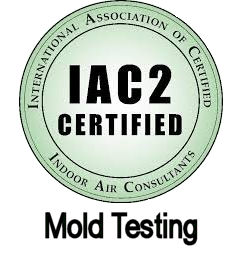



.jpg)









.jpg)



